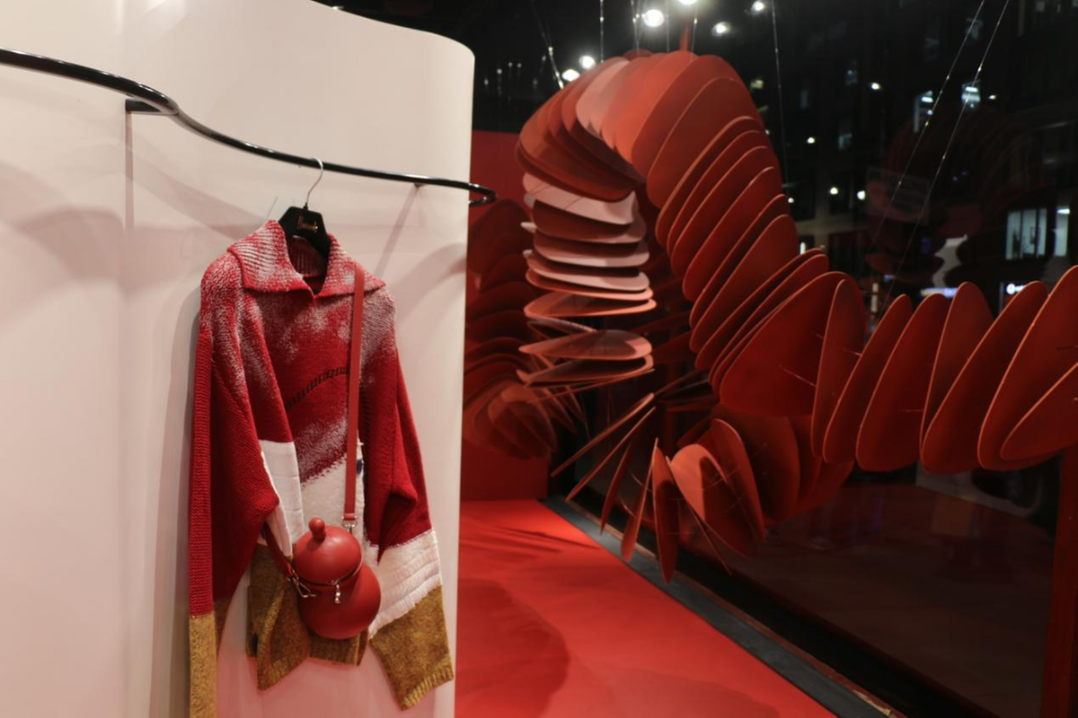Automakers floor accelerator in bid for growth
By LI FUSHENG | China Daily | Updated: 2023-12-29 09:49

Rising demand, transition to smart, green mobility pushing car sales to new highs
China's automotive industry is firing on all cylinders, powered by growing demand from car buyers, increased competition among automakers, and accelerated industry-wide transition toward smart and green mobility.
China, which has been the world's largest vehicle market since 2009, is expected to see sales hit a record 30 million units this year and rise to 31 million units in 2024, according to estimates by the country's leading automotive trade association.
China's vehicle sales peaked in 2017 at 28.88 million units. They fell to 25.31 million units in 2020, but have since started rebounding. In 2022, 26.86 million units were delivered.
Deliveries in the first 11 months of this year eclipsed that of 2022, totaling 26.94 million units, or 10.8 percent higher year-on-year.
With its confidence bolstered by double-digit growth, the China Association of Automobile Manufacturers said that 2023 will end with an annual growth rate of 11.7 percent, which will drive sales to 30 million units in the year.
The CAAM estimates that the momentum in the automotive sector will continue in 2024 to push sales to hit 31 million units, up 3 percent from 2023.
Xu Haidong, deputy chief engineer of the association, said its optimism is due to the ongoing macroeconomic recovery as well as the government's favorable industrial as well as consumption-stimulating policies.
The World Bank has estimated that China's economy will grow 5.2 percent in 2023, propelled by a gradual recovery of consumer sentiment and policy stimulus.
The country's economy is expected to expand by 4.5 percent in 2024, even as global growth is projected to remain tepid at 2.4 percent, according to the World Bank.
"The fast growth of the new energy vehicle sector, the rise of local Chinese marques and a stable and efficient industrial chain are helping boost the automotive sector's development," Xu said.

Robust performance
The positive signs were obvious in November.
Vehicle production hit a record 3.09 million units, up 29.4 percent year-on-year, while sales reached 2.97 million units, up 27.4 percent.
NEV production and sales each surpassed 1 million units in November, according to the CAAM.
In the first 11 months, NEV deliveries totaled 8.3 million units, up 36.7 percent year-on-year. As a serious choice among car buyers, they accounted for more than 30 percent of total vehicle sales in the country over the same period.
The popularity of NEVs has seen the rise of startups and prompted established carmakers to speed up their shift toward electrification.
Li Auto sold 41,800 vehicles in November, up 172 percent year-on-year. This brought total deliveries in the first 11 months to 320,000 units, higher than its sales goal of 300,000 units for the year.
If the momentum continues, the startup may see sales surpass BMW as the bestselling marque in the premium vehicle segment in 2024, said analysts. BMW sells around 800,000 vehicles a year in China, its largest market.
BYD, for the first time ever by a single brand in China's automotive industry history, sold over 300,000 vehicles in October, and again in November.
Private carmakers including Great Wall Motor and Geely as well as the big State-owned carmakers have picked up speed to charge into the NEV sector.
Great Wall Motor, China's largest SUV and pickup maker, saw its NEV sales in November soar 143 percent year-on-year to hit 31,248 units — the eighth consecutive month that the Hebei province-based automaker had seen its NEV sales grow.
The boom has also attracted technology companies to try their hand at NEVs.
Smartphone maker Huawei gave its first shot with carmaker Seres in 2022.
After some fluctuations in sales, their codeveloped AITO marque is already making waves, thanks to Huawei's giant cellphone customer base and its state-of-the-art technology in autonomous driving.
The technology company unveiled a new model in partnership with carmaker Chery in November to rival US-based electric carmaker Tesla's Model 3.
In the same month, Huawei teamed up with Changan to build a joint venture to develop and sell intelligent automotive systems and component solutions.
Yu Chengdong, head of Huawei's smart vehicle business unit, said China needs a smart electric vehicle platform that is headed by "a locomotive" and co-built by automotive firms.
In a research note, analysts from Ping An Securities said the new joint venture has great potential, estimating its annual operating revenue could reach over 100 billion yuan ($14 billion) in the long run.
They further said annual sales of vehicles that sport Huawei's technology package will reach 1 million units in the short term.

Big players
The NEV stage is not limited to new players.
International brands, especially European ones, are working hard or even together to take back the share they had enjoyed for decades.
BMW and Mercedes teamed up in late November to build a charging network in China, the largest market for both, as mileage anxiety remains a headache for NEV buyers.
The JV is expected to build a network of at least 1,000 high-power charging stations with around 7,000 high-power charging piles by the end of 2026.
Their charging network will be open to the public as well, while BMW and Mercedes car owners will have access to a series of features such as plug and charge, and online reservations.
Volkswagen and Tesla are building their own charging networks to dispel mileage anxiety and help accelerate an industry-wide transition from gasoline vehicles to NEVs.
Volkswagen, which owns brands from Audi to Porsche, is building its largest R&D facility outside Germany in Hefei, Anhui province.
Marcus Hafkemeyer, chief technology officer of Volkswagen Group China, said the facility is fully capable of developing brand-new models from scratch, involving design, testing, validation and approval.
It is developing an EV platform specifically for the Chinese market, based on its global MEB platform, to meet the requirements of Chinese customers, and the first model is scheduled to roll out in 2026.
"We will bring the platform to market maturity in just 36 months. This means that we are reducing the development time by around a third and can quickly tap into new customer groups in the dynamic e-car market in China," said Ralf Brandstaetter, chairman and CEO of Volkswagen Group China.
"They will be highly competitive," said Brandstaetter, when asked about the competitive edge of the vehicles that are scheduled to roll out in 2026 on its China-specific EV platform.
"We have set our target to remain the No 1 international carmaker in China … and a top three player in the country by 2030," he said.
Volkswagen is making Hefei an export base as well. The first model of Volkswagen Anhui is the electric Cupra Tavascan, which is being exported to Europe.
China has seen its vehicle exports soar since 2022, when it overtook Germany as the world's second-largest vehicle exporter.
It beat Japan in the first quarter of 2023 and has since been the largest vehicle exporter. From January to November, 4.41 million made-in-China vehicles were shipped overseas, of which around 25 percent were EVs and plug-in hybrids.
CAAM said total vehicle exports from China will grow to 5 million units in 2024.
Zu Sijie, chief engineer at SAIC Motor, said China's rapid rise to prominence in the electric and smart vehicle sector has positioned the country to become the world's leading automotive exporter.
SAIC's premium arm IM Motors was among the first carmakers in December to be allowed to test Level 3 autonomous vehicles in Shanghai. According to the Society of Automotive Engineers, Level 3 autonomy refers to hands-free driving in some conditions.
As China's largest vehicle maker by sales, SAIC exported 117,800 vehicles in November, up 6.05 percent year-on-year. Its overseas sales in the first 11 months this year totaled 1.07 million units, up 20.78 percent year-on-year.
Besides exporting vehicles, some Chinese carmakers are building plants overseas as they accelerate efforts to explore local markets quickly.
Changan is building an NEV plant in Thailand that will produce 200,000 vehicles a year, with the first vehicle to roll off the assembly line in 2025.
Startup Neta's first overseas factory started operation in Thailand in late November. The plant's annual production capacity is expected to reach 20,000 vehicles, and large-scale production is scheduled to start in the first quarter of 2024.
"This facility will serve as a key manufacturing hub for Neta's EVs, particularly the right-hand drive models, catering to the green mobility needs of Thailand and broader markets," Neta said.
lifusheng@chinadaily.com.cn
























